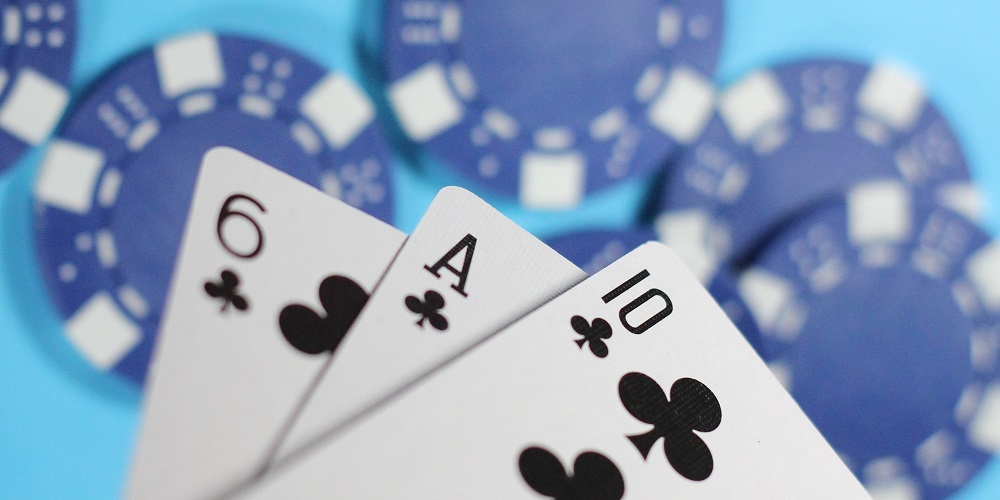

What are the blinds in poker: everything you need to know

When you
play poker for the first time it is normal that many doubts and questions
arise. Do not be overwhelmed, you must keep in mind that like any card or board
game must follow some rules to work. Once you learn them, the games will be a
piece of cake and you will be able to become a poker expert. Likewise, you must
take into account that poker has several game modalities and variants, such as
Texas Holdem, Omaha, Five-Card Stud, Seven-Card Stud, Razz... Each modality has
a variation in the rules, which are learned by playing. However, the general operation
and objective remains the same in all cases.
In this article we are going to explain what is a blind in poker, how they are structured and other basic concepts you should know about this general rule of the most popular card game in the world. Keep reading this article for more information.
What are blinds in poker?
As we
mentioned in the introduction, poker blinds vary depending on the poker
modality and limit being played -just as it happens with brings and posts,
which we will explain later in a specific post for each of them-. To talk about
what are blinds in poker and answer this question it is essential to know
another essential concept, the antes.
The antes consist of small portions of chips or money that are put into play by each player at the moment before the cards are dealt. It is a rule that gives more dynamism to poker thanks to which there is always money at stake. Having clarified this concept, we can proceed to explain what is a blind in poker. A blind in poker is very similar to a antes, the difference is that this rule does not apply to all players -although throughout the game everyone ends up being a participant-. The blind in poker corresponds to a portion of chips or money that is posted by the player to the left of the button - or in other words, the dealer. These blinds are usually played without antes, which allows the player to fold before the turn begins without having to put in money.
Types of blinds in poker
We have
just seen what are the blinds in poker, now, you should keep in mind that we
can distinguish two types of blinds in poker. Understanding how each of them
works will help you to know what blinds mean in poker much better. Let's take a
closer look:
Small
blind: The small blind is posted by the player to the left of the dealer. In
no-limit games, the small blind corresponds to half the minimum bet - i.e. the
lower of the two limits. For example, in a game with a limit of 5€/10€ the
small blind will be 2.5€.
Big blind:
The big blind has some differences with respect to the previous one. This blind
is played by the player to the left of the player who plays the small blind.
That is, two positions to the left of the button. The value of the Big Blind is
always twice the value of the Small Blind.
The blinds are not used in all poker modalities and their variants, there are some that opt for antes and bring-ins, and others that do not force to play any amount. In general, blinds in poker are played in Texas Hold'em and Omaha.
Structure of the blinds in
poker
To
understand what the blind in poker is - or what blinds in poker means - it is
important to talk about the structure of the blinds as well. The structure of
the blinds in poker has to do with the type of game to be played -or rather,
with the strategy to be implemented by each player-. When deciding the blind
structure you have to take into account the type of game you are going to play
- if you want it fast or slow, giving the opportunity to everyone to demonstrate
their tactics and strategies.
You should
keep in mind that the faster you increase the amount of the blind, the more fun
is implicitly added to the table. For example, if the blind becomes an
important part of the chips you have, this will be the only playing option you
will have -even if your cards are not worth playing. However, if the blind is
small, it will be more in line with the amount of chips that all players have
and, therefore, each player will have the possibility to demonstrate his best
tactics and strategies.
The structure of the blind in poker, then, can be adapted depending on the cards you receive, skipping the "logical increase of the blind".
How do the blinds go up in
poker?
The blinds in poker go up according to the two limits (minimum and maximum). For example, if the small blind is 10 and the big blind is 100, each player should have 1,000 starting chips. The blinds can be raised by doubling the limits proportionally. For example, 20/200 at the time of play.
How to calculate the
number of blinds in poker
To
calculate the number of blinds you have on the table all you have to do is to
divide the amount of chips you have -or the money-, by the amount of chips
placed by the player in the big blind. Many times, when talking about big
blinds in poker, players refer to them only as "blinds". We can also
find references to them as "bb", from the abbreviation of "big
blind".
You may also like

Leverage in poker: what to take into account
Within all the poker terminology, there are concepts that either have been inherited from other sectors, or have been invented within the poker world itself to refer to a play that needed to be coi...

The Popularity of Poker Streaming
The Popularity of Poker StreamingPoker streaming allows viewers to watch live games, tournaments, and analysis sessions, all from the comfort of their home. Professional streamers not only play the...

Phil Ivey ordered by judge to pay $10.1 million to Casino Borgata
Phil Ivey ordered by judge to pay $10.1 million to Casino BorgataTen-time World Series of Poker bracelet winner Phil Ivey has been ordered by a judge to return more than $10 million to Borgata Hote...













